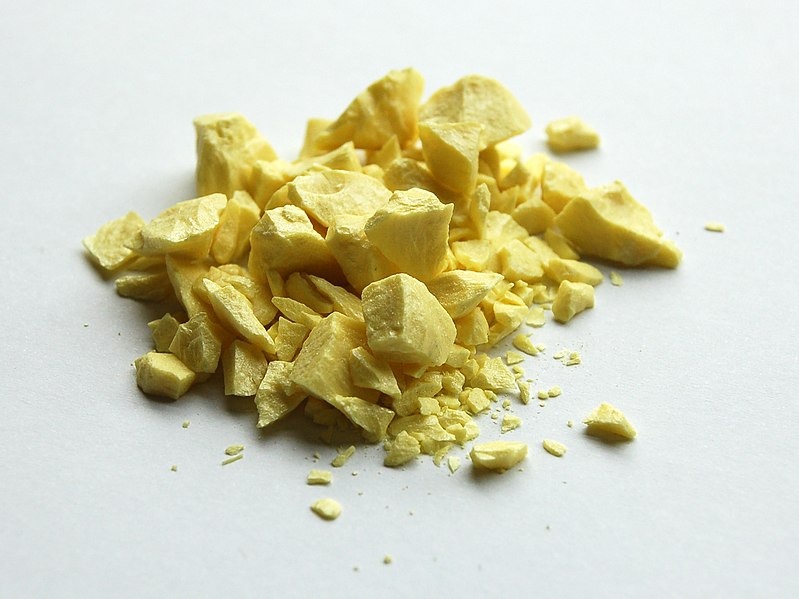Sulphur has been known to man for a very long time. Even in times of Homer ancient Greeks used the specific properties of sulphur dioxide liberated in the burning of sulphur for disinfection of homes. Deposits of native sulphur have also been known from ancient times. Thus, Pliny the Elder described the deposits of sulphur in Italy and Sicily. Sulphur was used for making dyes and treating fabrics. Like carbon, from the earliest times sulphur was used in pyrotechnics. The composition known by the name of "Greek fire" and invented, apparently, in the 5th century A.D. in Byzantium was a mixture of finely ground sulphur (one part), coal (two parts), and saltpeter (six parts). It is interesting to note that this composition differs only slightly from that of black (smoky) gunpowder.
The fact that sulphur is a good combustible material and combines readily with a great number of metals is responsible for its "privileged" position among other substances in the Middle Ages. Alchemists considered sulphur as the element of combustibility and a constituent of all metals. Very unusual properties were often attributed to sulphur, although some alchemists described its real properties rather accurately.
The elemental nature of sulphur was established by A. Lavoisier. However, in spite of the fact that by the beginning of the 19th century sulphur had already been recognized as an independent element, experiments had to be carried out to elucidate the exact composition of native sulphur. In 1808 H. Davy suggested that sulphur in its usual state is a combination of small amounts of oxygen and hydrogen with a great amount of sulphur. This questioned the elemental nature of sulphur but in 1809 Gay Lussac proved it beyond any doubt. In 1810 H. Davy pointed out that the presence of oxygen in sulphur may be due to sulphur oxides present in native sulphur. The oxygen content in sulphur varied depending on the deposit where the samples were taken. From the standpoint of modern chemistry one may say that oxygen found by Davy in sulphur was not the oxygen of sulphur oxides but that of oxysulphides of various metals, which are always present in sulphur.
The origin of the Latin word "sulphur" is unclear.
 |
| When burned, sulphur melts to a blood-red liquid and emits a blue flame that is best observed in the dark. |
 |
| Most of the yellow and orange hues of Io (Jupiter's Moon) are due to elemental sulphur and sulphur compounds deposited by active volcanoes. |
Source - Chemical Elements : How They Were Discovered
Read more at the Science Pole

No comments:
Post a Comment